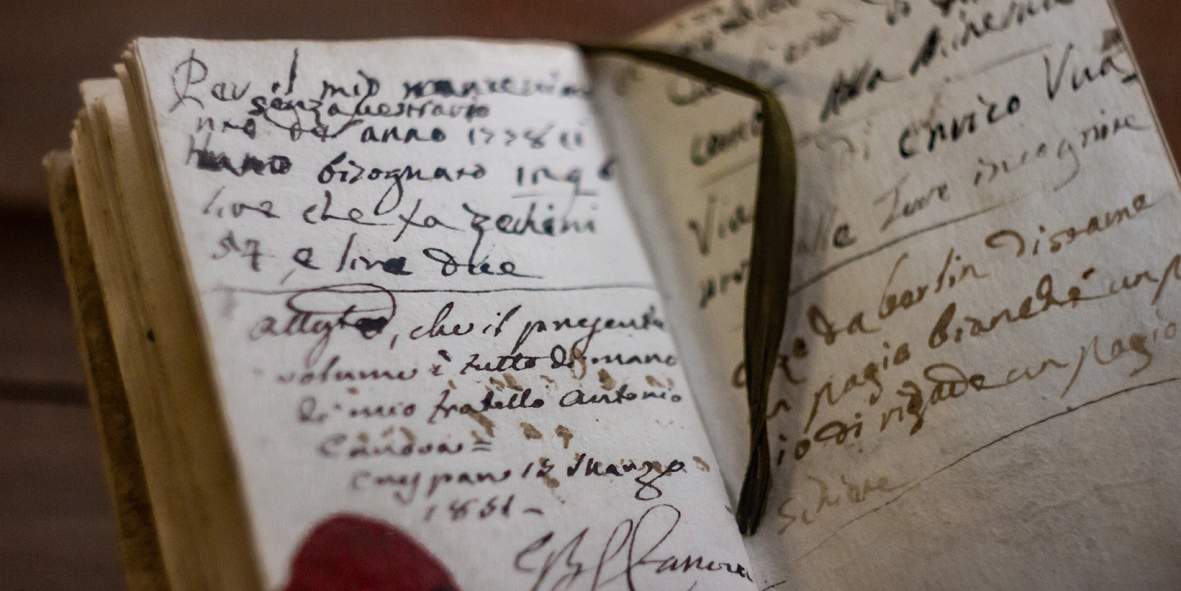All of Antonio Canova's manuscripts are online. The enterprise of the Bassano Civic Library.
The Civic Library of Bassano del Grappa has put online the entire Manuscript Fund of Antonio Canova (Possagno, 1757 - Rome, 1822), after a year of work that required the use of cutting-edge technology to make available to anyone in the world the high-definition images in perfect original color of the more than 40.000 pages of the 6,658 different manuscript documents in the Canovian Fund: letters, travel diaries, notes, awards and diplomas, and even a price list of works and the notebook in which the artist jotted down his English lessons. Then the sonnets, which his admirers sent him as a token of their admiration, notes, firsthand accounts of his encounters with the major personalities of the time, Napoleon in primis. All of this, divided by themes and areas, can be freely consulted at archiviocanova.medialibrary.it. These are materials that have a unique stric value but are not lacking, often, in artistic interest as well, since Canova used to jot down sketches, insights, and visual notes on whatever attracted his interest.
Canova called himself a “Letterless Homo,” but in reality the artist wrote a great deal and accumulated an immense epistolary as his fame grew and as his relationships with friends, admirers, collectors, and acquaintances compelled him to write and have written, receive, read, and be read thousands of missives on a wide variety of subjects: from those most closely related to family affections and professional activity to the formal obligations arising from the many public offices the artist held.
“From this mass of documents,” comments the Library’s director, Stefano Pagliantini, “emerges the personality of Canova, a man perfectly aware of his own worth and rightly endowed with a secure self-esteem. He was careful not to disperse any evidence of his activity, in this he was helped by his secretaries and his brother Giovambattista Canova Sartori, who had, among many others, the task of preserving and archiving any of the Master’s creations or communications sent to him.” A choice that the sculptor made his own from a very young age, well before his apotheosis, as is evidenced by the presence in the Fund of his Travel Diary in which, at just 22, he records the journey that led him from Venice to Rome. Especially beginning with his move to Rome, correspondence became indispensable for him to maintain relations with family members in Possagno, friends in Bassano, including Tiberio Roberti, and the Venetian milieu from which he had detached himself, but with the intention of keeping ties tight. Added to this are the epistolary contacts with patrons and with the enormous number of people with whom the artist came into contact: intellectuals, Italian and foreign artists, the ecclesiastical milieu, the wide entourage of Italian and European nobility, writers, scientists, military men, government men, princes, emperors. The Fund of Canova’s manuscripts came to Bassano thanks to Giovanni Battista Sartori Canova, the sculptor’s half-brother, between 1852 and 1857, together with the albums of drawings, the volume recount of engravings, and a large part of the artist’s personal library for the “fine arts” part.
“To be digitized, thanks in part to the contribution of Banca Popolare di Marostica Volksbank,” says the director of the Civic Museums of Bassano, Barbara Guidi, “are, in this case, the writings, but the project will also expand in the future to include the drawings and the rest of the Canovian artistic heritage owned by the Museums Library Archive of Bassano del Grappa. In fact, the collection boasts as many as 1,756 drawings housed in the Civic Museum’s Cabinet of Prints and Drawings. The Civic Museums also preserve the famous monochromes, one of the rarest and most singular expressions not only of Antonio Canova’s work, but more generally of neoclassical art, and about sixty sculptures including precious preparatory sketches such as the one for the Three Graces, famous plaster casts such as the Venus Italica and Hebe, or, again, the series of portraits and ideal heads.”
“A collection of documents unique in the world that we are proud to be able to make available to everyone,” says Bassano del Grappa Mayor Elena Pavan, “a fundamental patrimony to deepen not only the artistic path but also the life of Antonio Canova, made available to everyone precisely at the opening of the Celebrations for the second Centenary of the death of the great Venetian sculptor.”
Image: small booklet of notes by Canova (1777-1779).
 |
| All of Antonio Canova's manuscripts are online. The enterprise of the Bassano Civic Library. |
Warning: the translation into English of the original Italian article was created using automatic tools. We undertake to review all articles, but we do not guarantee the total absence of inaccuracies in the translation due to the program. You can find the original by clicking on the ITA button. If you find any mistake,please contact us.




























